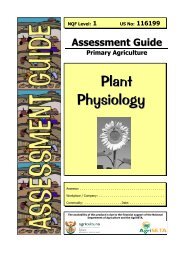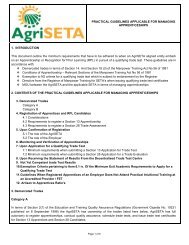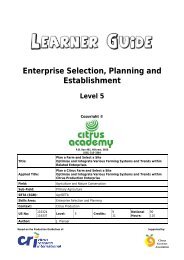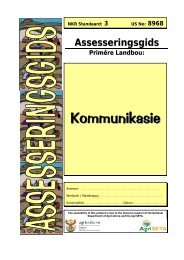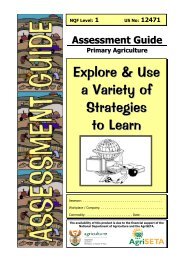Evaluate Basic External Animal Anatomy and Morphology - AgriSETA
Evaluate Basic External Animal Anatomy and Morphology - AgriSETA
Evaluate Basic External Animal Anatomy and Morphology - AgriSETA
- No tags were found...
Create successful ePaper yourself
Turn your PDF publications into a flip-book with our unique Google optimized e-Paper software.
<strong>Evaluate</strong> <strong>Basic</strong> <strong>External</strong> <strong>Animal</strong> <strong>Anatomy</strong> <strong>and</strong> <strong>Morphology</strong>Primary Agriculture NQF Level 1 Unit St<strong>and</strong>ard No: 11617322Illustration of some of the different beak shapes of birds• The cereOn the upper surface of the beak at its base (where itjoins the head) is a soft wax like, warty structure calledthe cere.• The nostrilsThe nostrils are situated in the cere at the base of thebeak - one on each side. The nose is used for breathing<strong>and</strong> smelling.• The eyesThey have large, round eyes on each side of the head.Each eye has two eyelids as well as a membrane, which is attached tothe inner corner of the eye.The eyes of birds are very well developed <strong>and</strong> in birds like owls <strong>and</strong>eagles play a very important role in finding their prey. Owls use theireyes <strong>and</strong> ears to catch their prey in near darkness. Some birds can seemore than 180° with one eye. That helps them in detecting prey ortheir own enemies.Version: 01 Version Date: July 2006



